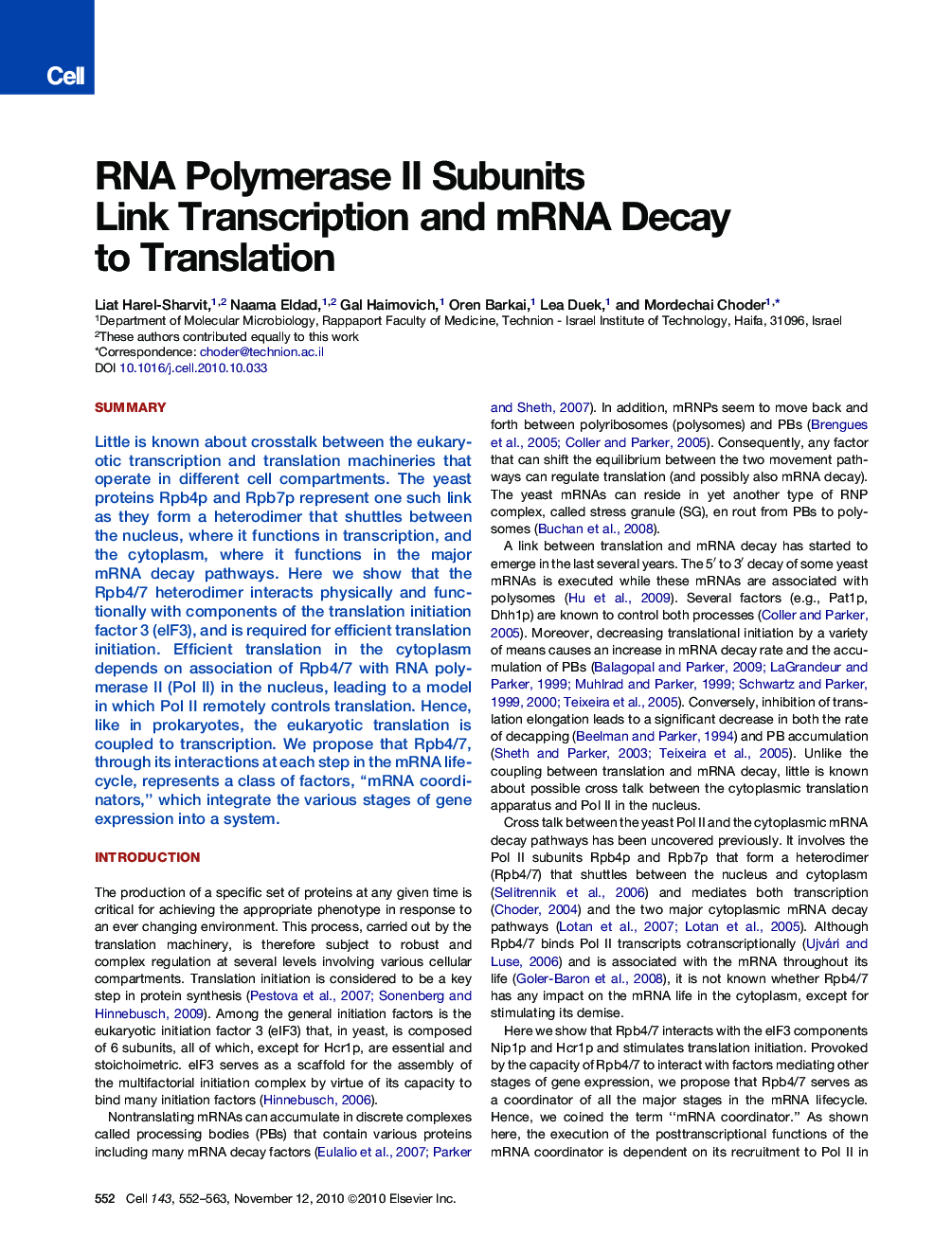| Article ID | Journal | Published Year | Pages | File Type |
|---|---|---|---|---|
| 2036503 | Cell | 2010 | 12 Pages |
SummaryLittle is known about crosstalk between the eukaryotic transcription and translation machineries that operate in different cell compartments. The yeast proteins Rpb4p and Rpb7p represent one such link as they form a heterodimer that shuttles between the nucleus, where it functions in transcription, and the cytoplasm, where it functions in the major mRNA decay pathways. Here we show that the Rpb4/7 heterodimer interacts physically and functionally with components of the translation initiation factor 3 (eIF3), and is required for efficient translation initiation. Efficient translation in the cytoplasm depends on association of Rpb4/7 with RNA polymerase II (Pol II) in the nucleus, leading to a model in which Pol II remotely controls translation. Hence, like in prokaryotes, the eukaryotic translation is coupled to transcription. We propose that Rpb4/7, through its interactions at each step in the mRNA lifecycle, represents a class of factors, “mRNA coordinators,” which integrate the various stages of gene expression into a system.
Graphical AbstractFigure optionsDownload full-size imageDownload high-quality image (323 K)Download as PowerPoint slideHighlights► Rpb4/7 heterodimer, an mRNA synthesis and decay factor, interacts with eIF3 ► Rpb4/7 promotes efficient translation in the cytoplasm ► Pol II influences translation by mediating association of Rpb4/7 with transcripts ► Rpb4/7 features suggest a role as a coordinator of various stages of gene expression
